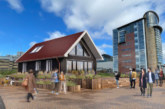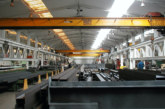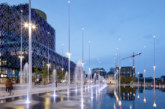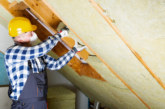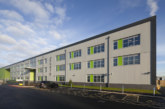Operations Director at Steico UK Adrian Judd explains the advantages of retrofitting existing homes with natural materials and how this can offer social housing schemes countless benefits.
Local authorities and housing associations often house some of the most vulnerable people in society. The health and wellbeing of these occupants should be prioritised by social housing schemes, to ensure vulnerable people have the level of comfort that they deserve in their homes.
A healthy home is a building that is warm, naturally lit, soundproof and has a high internal air quality. In healthy homes, occupant wellbeing is safeguarded, as their breathability and use of natural light helps to prevent the effects of conditions such as asthma, allergies and sleep disorders. Concerningly, research carried out by Velux found that one in six Europeans currently live in an unhealthy home1, highlighting the need for an overhaul in the housing sector.
Constructing an entirely new, healthy building may not always be feasible due to budget or time constraints, especially for local authorities and housing associations who may have limited funds and resources. Of the UK’s housing stock, social housing accounts for more than four million homes2 – all of which could benefit from retrofitting to improve their overall performance, indoor air quality and energy efficiency. These enhancements can help to safeguard the health and wellbeing of potentially vulnerable occupants.
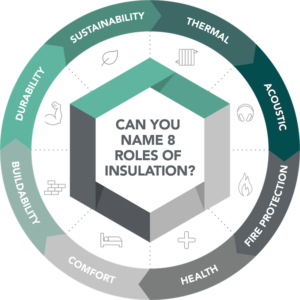 Healthily improving the performance of homes
Healthily improving the performance of homes
Retrofitting and refurbishment provide local authorities and housing associations with an affordable solution to achieving healthy homes. There is also minimal energy used in retrofitting process in comparison to energy use for new-builds — reducing the impact on the environment, which is further decreased when using natural materials.
Using natural materials in retrofitting has additional benefits, including:
- Safeguarding occupant wellbeing — natural materials can help to ensure a more comfortable environment for occupants, due to the enhanced performance of insulation. Retrofitting with natural insulation can therefore help to improve the overall wellbeing and health of occupants.
- Futureproofing — older homes may not have been built with resilience and durability front of mind — two key properties of natural materials. Retrofitting using natural materials ensures that buildings are resistant to the pressures from their external environments.
- Long-term savings — energy efficiency in a home can be enhanced through the use of natural materials, reducing the cost of energy bills for landlords or tenants. The price of repairs and maintenance over time can also be significantly lessened due to the durability of natural materials.
- Decreased carbon emissions — due to improved energy efficiency, less energy will be used to heat and light a healthy home. This will result in reduced carbon emissions.
There has been a shift in focus towards energy efficiency, resulting in newer buildings being built with little consideration to air quality and ventilation. Barbara Fischer-Clarke from Stommel Haus stated: “When you build a more airtight house, you have to be careful that you don’t end up with an internal atmosphere that’s little more than a plastic bag.”3
A lack of ventilation within homes, caused by a heightened focus on energy efficiency, can result in an increased amount of toxins within an internal environment. Good ventilation can reduce — or even eliminate — the amount of toxins released internally whilst ensuring consistent air flow. This can contribute to a healthy home to ensure the wellbeing of occupants.
Breathing new life into older buildings
To ‘breathe life’ into older buildings and improve their overall performance, there are small retrofitting process that can be conducted. Proponents of Baubiologie (building biology) believe that certain materials and design ideas can have a positive impact on wellbeing, proving them to be suitable for organisations which house potentially vulnerable occupants.
Here are some key ways in which you can improve the performance of existing buildings:
- Make use of natural light
Natural light in a home has countless benefits for occupant wellbeing. It can help to improve productivity, focus and regulate sleep cycles. Natural light also contributes to space conditioning (lighting and heating).
- Incorporate an external insulation system
An external insulation system will help to ensure a warmer home with improved air quality. Wool and woodfibre — which are often used in external insulation systems — have a high thermal efficiency and are vapour-permeable, ensuring enhanced indoor air quality and warmth.
- Use natural materials for structural improvements
Structural improvements, such as new flooring, windows or building an extension, are frequently required within homes. Natural materials can be used for these improvements — contributing to a healthy building and breathing new life into the home.
- Remove impurities in the air
Impurities can exist in the internal atmosphere, such as toxins released from damp, mould and mildew. Internal air quality can be enhanced by eliminating damp in homes through better-quality ventilation.
- Incorporate eco developments
The construction industry is constantly developing ways to make buildings more healthy and eco-friendly. Eco-friendly developments can be used to improve the performance of a home.
Healthy homes can help to ensure the wellbeing of both the population and the planet. Retrofitting offers a cost-effective and energy-efficient solution to improve the performance of homes, safeguard the wellbeing of occupants and secure a healthy planet for the future.



